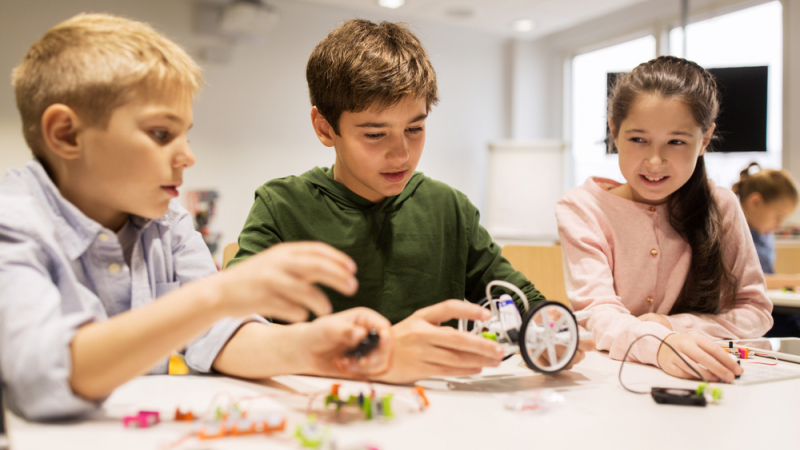3 Ways to See the Value of Activities in Omnibus

There is a type of teacher loose in the world of classical education. They would really like to be college professors. They have so much of what we really need in teachers. They love books; they love schoolwork; they can be inspiring. Often, sadly, they can really destroy all their potential because they fail to put themselves in the place of all of their students when they are preparing for class. If you are one of these teachers or have one on your staff, this post is for you. One of the ways you can really improve your rapport with your students and capture those students who are you currently losing is by investing in the activity sessions in Omnibus.
What are “activities” and why do some teacher fail to value them? Activities are sessions that do something instead of discussing or writing or reading something. Some teachers—especially the ones I mentioned in the previous paragraph—are tempted to skip them because they view them as “soft” classes. Instead, they want to choose sessions that are more rigorous. (They also might be skipping activities because they take time and preparation, but my best advice if that is your problem is that you should talk with some really organized parents and get help.)
Here are three ways to help you see the value of activities in Omnibus:
Activities Bring Excitement to Students who Might be Struggling with the Reading
We have many kinds of students. Some could curl up in the corner with a cup of tea and book and happily read all day. Teachers sometimes think that this is the paradigm for the “good student” or at least what we are hoping all students will become. King David, however, probably was not like that at all. God called him a man after His heart.
Some students struggle to be as excited about reading. Activities really help these students maintain interest in the books that they are reading. The same boy who might struggle with Livy would love a reenactment of a Roman Battle with a Barbarian tribe—particularly if part of the battle involves water balloons!
God made us different. Having a varied approach to learning helps you capture many students as possible. For this reason alone, activities are some of the most valuable sessions in Omnibus.
Activities Bring Life Experience that Helps Students Read Better
Often, we keep the content of a book at arm’s length. We learn about it, but we cannot really feel it. Activities help us to learn “through the skin”. This type of learning often yields important insights into the reading of the text.
One of the activities that we have in 7th grade demonstrates this every year. When we read the Orestia by Aeschylus—a book that ends with a trial, we have the class split into a few groups: prosecution, defense, and jury. (If you have enough time, you can do it twice so that the jury also can practice making their cases.) We let the students dress up in their best lawyer clothes (suits and dresses). They ply their best arguments for the conviction or acquittal of Orestes.
First, this always causes great excitement and joy. Every time one of my daughters’ classes has this activity some story of some line from the trial gets brought up at the dinner table. Also, it puts the students into the skin of the book. They feel what it is like to make a case or to try to prove guilt. This, in turn, makes the reading more real, more powerful, and it gives the students deeper insights into the text. This impact is another reason with activities are so valuable.
Activities (Especially Joyful Ones) are Seared into the Memory of Students
Experiences ingrain themselves in our memory. They mean so much for the students even if—or maybe I should say, particularly if—they are crazy. In the early years of our school, we were reading Frankenstein. This was before the Omnibus Books existed. We had a very creative group of teachers, however, and they came up with the idea to have a fun night activity that both celebrated our reading of Little Women along with the Frankenstein. The Little Women part of the evening was cultured, on point, and amazing. After we had our fill of Pickwick Papers, music, scones and tea, however, what we called the Frank-o-bots competition began. We had split the students up into four or five groups. Each group was given an identical remote-control car and told that their job was to turn their car into a machine that would wreck all of the other competitors.
We had a number of students in the early years that had the “engineering gene” and they all put in exceptional amounts of work. One group, however, constructed a car that looked like a wedge. This car, decked out with some pop singer on the side, was dominant. It ran into the other cars and flipped them onto their backs. Game over. In the final, the wedge-mobile was up against an unlikely opponent. This Frank-o-bot really reminded you of Frankenstein. It had a screw coming out the front at a 45-degree angle that was meant to puncture a water balloon that was hanging from an improvised arm attached to back of the vehicle. It seemed only a matter of time until wedge had the victory. Then, to everyone’s shock, the screw-mobile hit wedge just right rolling wedge onto its side. Game over. I still—20 years later—remember the joy and happiness of the students running, hugging, and cheering. I bet every one of them remembers it too.
Events and activities are special. They draw in the hearts of those students who might not be captured by reading alone. They often help students understand their reading in a deeper more profound way. They sear in our minds joyous memories and lessons that will bring a smile decades later. Don’t ignore activities. Don’t pretend that they are something to get past so that you can get back to real work. Use activities to make your students and children into a community—not just a class.






